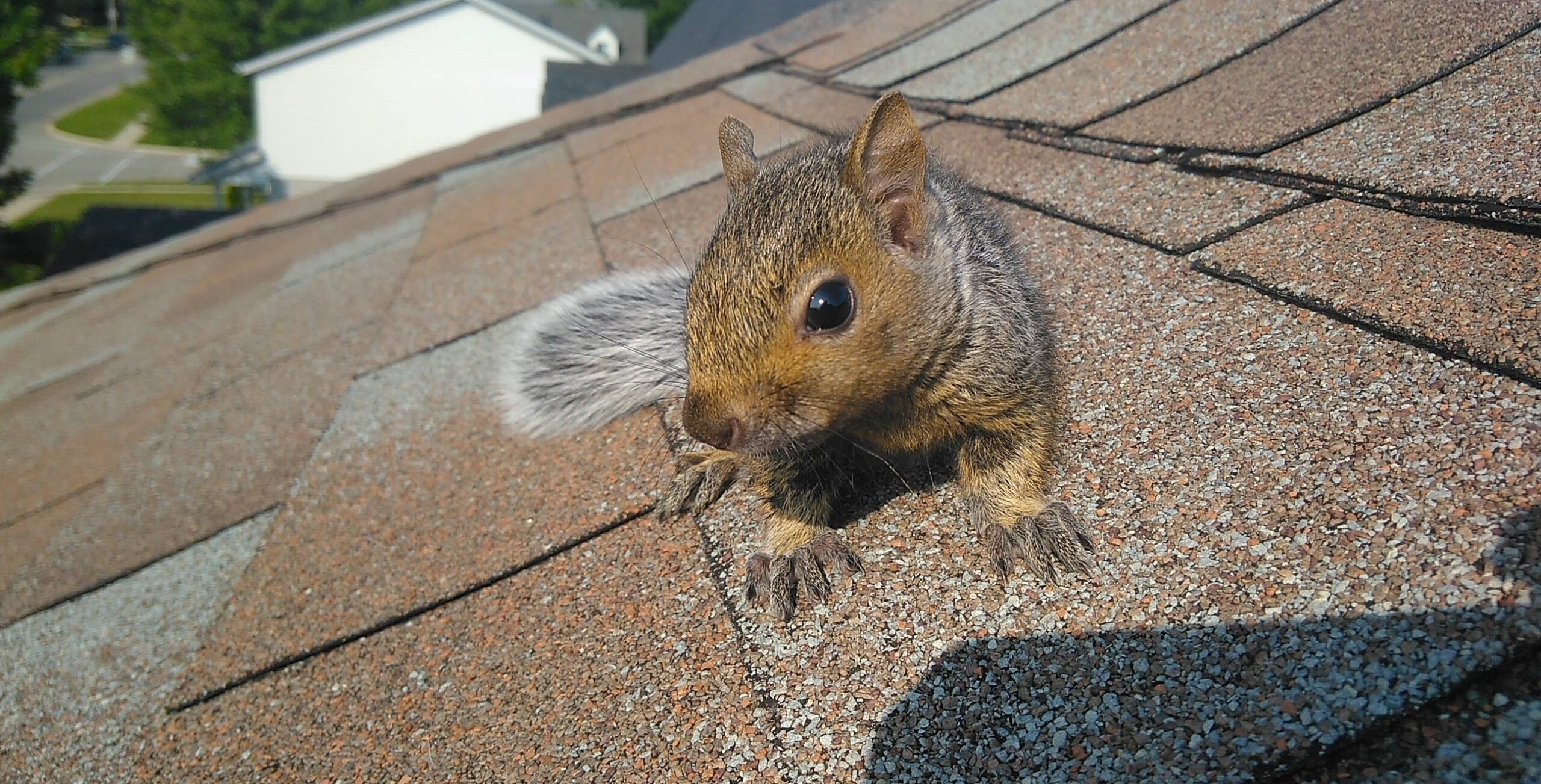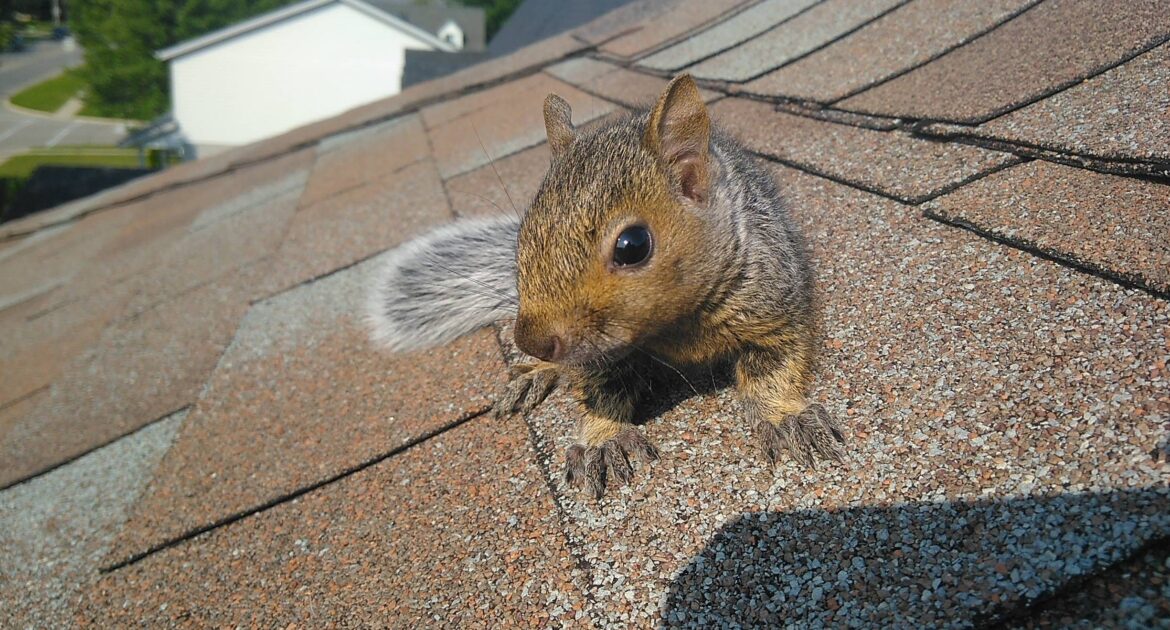When the temperature plunges and snow blankets the world outside, squirrels become champions of survival, demonstrating remarkable winter adaptations. But how do these little creatures escape the harsh cold? It turns out, squirrel winter adaptations are a combination of clever behaviours, physical changes, and resourceful habits.
You don’t need to see squirrels to know they’re active, tucked away in cozy nests or darting briefly through snowy landscapes to gather food. Understanding how squirrels survive winter not only helps us appreciate these animals but also highlights what to do if they make your attic their winter haven.
At Skedaddle Humane Wildlife Control in Ottawa, we’ve seen our fair share of winter squirrel behaviour. From intricate nesting practices to careful food storage, squirrels are experts at winter prep. But if one of these furry neighbours decides to turn your home into theirs, we’re here to help with our humane, effective one-way doors that allow wildlife to leave your house but stop them from coming back.
Here’s everything you need to know about squirrel winter adaptations, how squirrels survive winter, and what makes their winter behaviour so fascinating.
Squirrels Build Winter-Ready Nests
A squirrel’s home is critical to surviving the icy grip of winter. Many squirrels construct nests, called dreys, from natural materials like twigs, leaves, moss, and bark, usually high in trees. These nests are surprisingly sturdy and well-insulated, keeping the chill at bay.
But squirrels don’t stop there—they’re also big fans of tree cavities. These hollowed-out spaces provide even more protection against the cold, acting as cozy retreats to keep them snug when the temperature drops. Grey squirrels are particularly talented at scouting out these tree hollows, showing how their instincts guide them to the safest shelters.
Here are the benefits of their winter nesting behaviour:
- Warmth: Insulated nesting materials trap heat.
- Protection: Elevated nests reduce predation risks.
- Teamwork: Some squirrels share nests, huddling together for warmth.
These nests are more than just an impressive feat of engineering; they’re a testament to how squirrels adapt their behaviours to survive the harshest months.
Food Hoarding and Fat Storage
Squirrels never show up unprepared for winter. These animals spend autumn obsessively collecting and hiding food—primarily nuts, seeds, and berries—to keep themselves fed when resources become scarce. This process, known as scatter hoarding, involves burying small food caches in various locations.
Do squirrels rely on sheer luck to find their hidden treasures later? Not at all. Squirrels have an incredible memory and highly developed spatial awareness, allowing them to retrieve their stashed food even under layers of snow. They also rely on their powerful sense of smell when memory alone isn’t enough.
But food storage isn’t the only trick up their sleeves. Squirrels also rely on fat storage to survive the colder months. By consuming calorie-rich foods in the fall, they build up fat reserves that provide both energy and insulation when food supplies dwindle.
Why does this matter?
- Fat acts as body armour against the cold.
- Stored energy helps sustain them during days they can’t forage.
- Scatter hoarding reduces the risk of losing all their supplies to predators.
This careful planning reflects how squirrels solve one of winter’s biggest challenges—finding enough food to stay alive.
Thick Winter Coats
Squirrels’ physical adaptations complement their behaviours perfectly. Their luxurious winter coats are a critical defence against the freezing cold. By the time fall transitions into winter, squirrels shed their lighter summer fur and grow a thicker, denser coat designed for insulation.
Their bushy tails also play a key role. When resting or sleeping in their nests, squirrels wrap their fluffy tails around their bodies to conserve heat. This built-in blanket not only retains warmth but also protects vulnerable areas like their faces and feet.
Key advantages of their winter coats:
- Extra fur insulates against frigid air.
- Camouflage provides protection from predators on snowy landscapes.
- Their tails multiply as blankets and shields from frost.
Imagine relying on nothing but your body to withstand freezing temperatures. It’s amazing how squirrels’ natural defences allow them to do just that.
Behavioural Changes to Conserve Energy
Squirrels may not hibernate completely, but they have adaptations that resemble a scaled-down version called torpor. During particularly cold days, squirrels reduce their activity and metabolic rates, staying in their nests for longer periods. This helps them conserve energy and stay warm.
Although squirrels aren’t out and about as much during winter, they still pay attention to the weather. By venturing out only during warmer stretches of the day, squirrels balance the need to forage with avoiding excessive exposure to the cold.
Interesting examples of winter squirrel behaviour include:
- Reduced Movement to save energy.
- Social Nesting, where squirrels share space and body heat during extreme cold.
- Careful Foraging, limiting time outside to minimize risk.
These behaviours are just another way these animals demonstrate their ability to adapt to environmental challenges and find balance in nature.
Clever Thermoregulation Strategies
When temperatures dip dramatically, squirrels employ another incredible adaptation—thermoregulation, or maintaining their body heat. This ability is primarily managed through unique physiological mechanisms.
One fascinating method involves slowing their metabolism to conserve energy. This creates a form of temporary hibernation where their bodies use minimal resources. While not as intense as full hibernation, this adaptation provides just enough of an edge to get through tough conditions.
Additionally, squirrels rely on shivering as a short-term survival strategy. Shivering generates body heat quickly, acting as a defence against sudden drops in temperature.
These thermoregulation strategies complete the picture of how squirrels survive winter, proving their unmatched resilience.
Why Winter Squirrels Might Target Your Home
Sometimes, squirrels’ survival instincts lead them to urban areas, where attics, garages, and chimneys mimic the warmth and safety of tree cavities. While this may seem harmless at first, it can lead to significant property damage and unwanted disturbances.
At Skedaddle Humane Wildlife Control, we know why squirrels might move indoors and how to remove them without harm. It’s why we use humane methods like one-way doors, allowing squirrels to leave but preventing re-entry. This solution preserves their safety while also protecting your home.
Benefits of our approach:
- Humane and effective wildlife removal.
- Prevents future intrusions with exclusion measures.
- Keeps your property damage-free.
By trusting professionals like us, you avoid the risks of ineffective DIY attempts and enjoy long-term peace of mind.
Need Help? Request an Estimate Today
Squirrel winter adaptations are impressive, showcasing how nature equips animals to survive freezing months. By building nests, storing nuts, and sometimes co-opting homes, these clever creatures endure even the deepest snow.
If you notice unusual winter squirrel behaviour or signs of squirrels in your home, the experts at Skedaddle Humane Wildlife Control in Ottawa offer solutions. Using safe, humane methods, we help squirrels relocate and ensure your home remains secure.
Protect your home with our expertise! Contact Skedaddle Humane Wildlife Control today to squirrel-proof your space and enjoy a peaceful, nest-free winter season. Trust our commitment to quality and compassion to keep both your family and wildlife safe all winter long.




